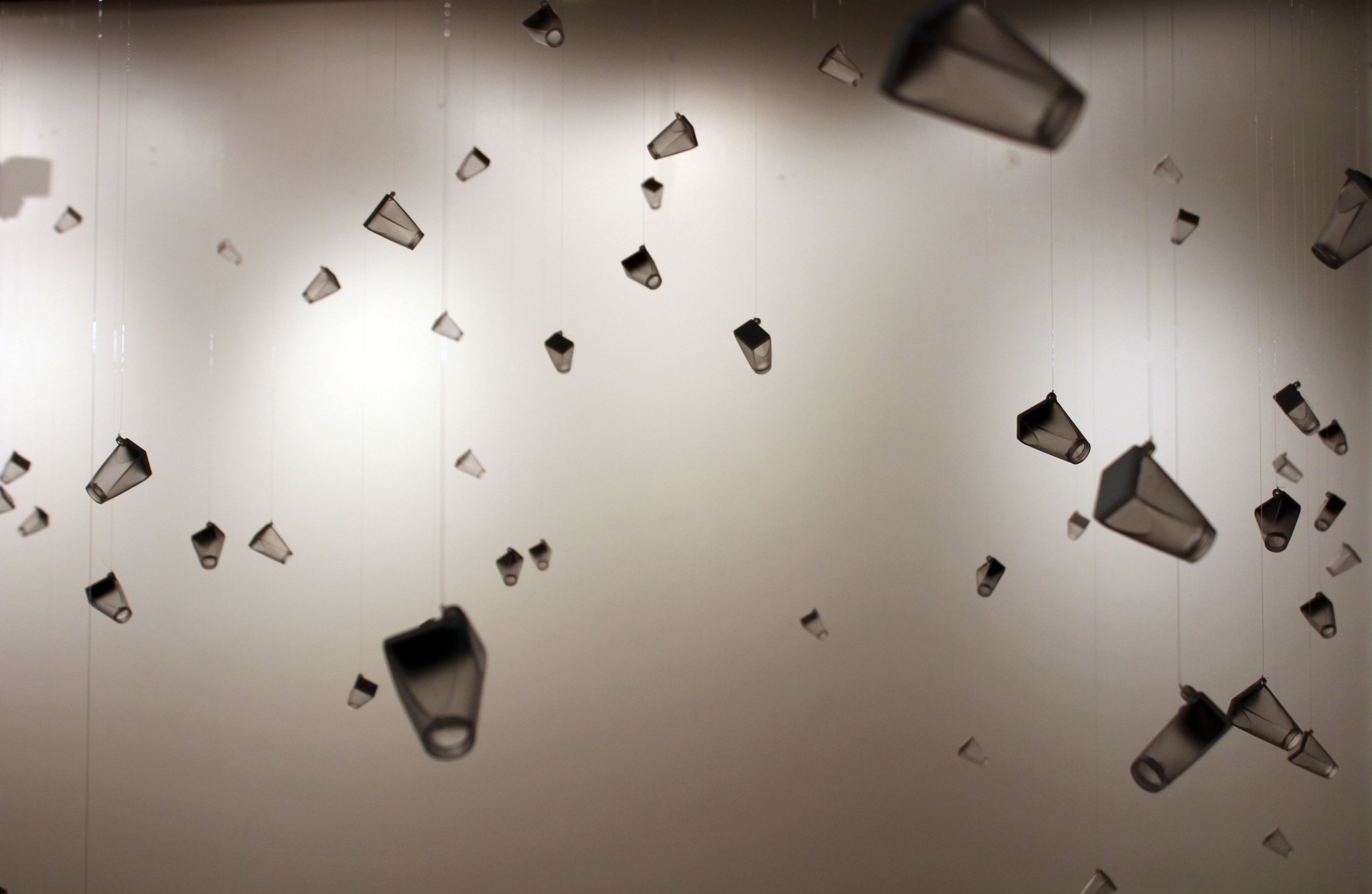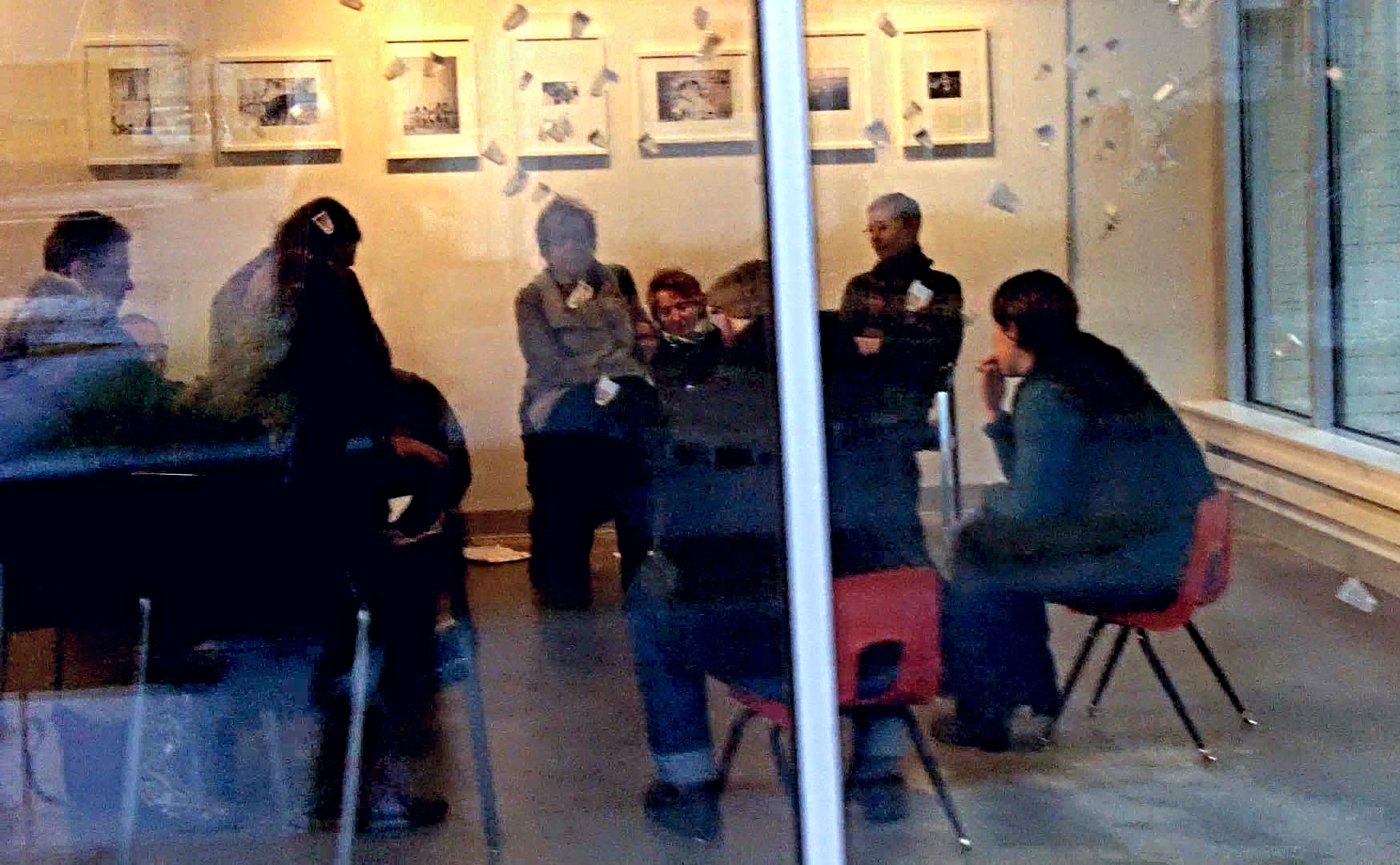Thoughts on Mariana Tres’ Immersive Exhibition CHILDHOOD IS A STRANGE COUNTRY by Nona Glazer, Professor Emerita, Sociology, Portland State University
Mariana Tres melds perspectives that too often are fragmented by artists and succeeds where many political pundits, government officials, and even scholars fail. She asks us to recognize how society impinges always on our everyday “private” worlds. We wander through her past and the linked history of her birth country as we view her photos, as we go from one slide viewer to another. Her childhood is a strange country, stranger than many others because, as we come to understand, it is framed by global political actions.
In this way she links the public sphere of the political actions of conservative elites with the private sphere of childhood and family. She needs only a brief, quiet explanation of the connections to clue us to the photographs that invoke history, both personal and public, and with an installation that encourages wandering and repetitive viewing open even to small children.
Tres combines the concrete with allusions. The concrete historical context is there in photographs of family and friends, and of Mariana herself as a child; it is there in those of the dictator Videla with the dictator Pinochet. Political allusions are in her inscriptions on photos, written in the child’s voice she worked painstakingly to re-access.
Tres faces two problems in addressing American viewers: first, Americans are prone to historical amnesia. We forget the Monroe Doctrine that announced US control over the fate of all countries in our southern hemisphere. We forget or are ignorant of the many US interventions, militarily or through covert funds of opposition groups and with military training and equipment that toppled elected government or supported brutal dictatorships. She also has to overcome the American preference for using the psychology of the individual to understand public issues. We favor villains and “human nature”: the economic collapse of 2007 was due to greedy bankers; “bad apple” soldiers for the disgrace of Abu Gharib; depraved and neglected loners for death by gunshots of their classmates. We skip over the social structures in society – of the economic, political systems and the military-industrial system that shape daily life from joblessness as corporations going overseas, to the collapse of public education by budget starvation.
Mariana Tres forces us to recognize the connections between her family’s necessary flight to a new country and the military dictatorship. We recognize that the military overthrow of the civilian president that made General Jorge Videla dictator was a response by the religious, economic and political elites to their fear of sharing the country’s wealth and political power with the people in the society. And, she brings to our memory the untidy history of the United States government in the coup. Americans may not have known of Operation Condor. We knew enough: that since the end of World War II, our government was adamant that only governments friendly to the U.S., and friendly to American corporations would be safe from U.S. intervention.
Argentineans can be reminded each week of the link between private sorrows and public institutions as the Madres of the Plaza de Mayo march. They insist on asking repeatedly how each of their children disappeared during the Dirty War, and on reclaiming their grandchildren kidnapped or born in captivity only to be handed over for adoption by military families. They march for justice.
The marching, the demands for justice, the healing work, including Tres’ Childhood is a Strange Country, has had one recent victory: as I sat down with Mariana to discuss my writing about her piece in December, 2010, the dictator General Jorge Videla was being sentenced to life in prison.
Nona Glazer, Professor Emerita, Sociology
Portland State University
Artist Statement Childhood is a Strange Country
"TO MODIFY THE PAST IS NOT ONLY TO MODIFY A SINGLE ACCOUNT: IT IS TO ANNUL ITS CONSEQUENCES, THAT TEND TO BE INFINITE. — The Other Death, El Aleph, Jorge Luis Borges
Much of my work concerns itself with history, fiction and memory: Childhood is a Strange Country is a series of multi-media projects that investigate and re-organize these elements at the difficult intersection of the personal and the political.
BACKGROUND
I was born in Buenos Aires, Argentina where I spent my childhood amidst an increasingly unstable political environment. A cruel military dictatorship seized power in 1976 and ushered in a period of gruesome violence known as the "Dirty War”. Throughout the late 70’s and early 80’s nearly 30,000 Argentinians were arbitrarily “disappeared” — meaning chillingly abducted, tortured and killed — a carefully orchestrated effort by the U.S. to contain leftist politics in Latin America. This artwork was made in response to my first trip back to Argentina since my family fled this political strife in the late 1970’s. There, I reunited with my extended family and met a society in the aftermath of a national trauma. The family photographs and documents recovered on that trip were the starting point for this project.
CHILDHOOD
During the creative process I realized I could not resolve this work with the intellect of an adult; only from the perspective of a child would I be able to integrate an adult understanding of my childhood circumstance. By writing with my non-dominant hand, a practice that activates untapped areas of consciousness, I accessed a more powerful, immediate and authentic response: the innocence and joy of a child juxtaposed against the whispered backdrop of a society living in terror.
MEMORY
Looking through telescopic slide viewers invites an intimate and interactive tour of my childhood memories: favorite toys, recovered family photographs and press photographs of the military regime, imagery that saturated the media throughout my childhood. In the way that some memories are persistent, certain images or details repeat throughout the installation — some memories are out reach, some are darker or clearer than others. The narrative is idiosyncratic: through two separate entry points, each visitor traverses the space and encounters the slide viewers in different order reconstructing and interacting with the narrative, evoking the uniqueness and intimacy of memory.
SOLIDARITY
The mothers of the disappeared in Argentina mobilized to reclaim their children - an example of courage and activism, the Madres de la the Plaza de Mayo have marched in silent protest in front of the President’s House (Plaza de Mayo) in Buenos Aires every Thursday at 3:30 since 1976. Many have been disappeared themselves as a result but they continue to this day to demand, now poetically, that their children be returned alive. In a gesture of solidarity, poets Judith Arcana and BT Shaw joined me in leading a spoken word performance, every Thursday at 3:30 for the duration of the exhibition.
THANK YOU
This project was made possible by the love and support of my friends and family, the generosity of the Milepost 5 Artist Residency in Portland, Oregon and a grant from Indiana University.
INFORMATIONAL LINKS
General Jorge Videla Sentenced to Life in Prison (coinciding with this exhibition)
US National Security Archives (nsarchive.gwu.edu/)
Disappeared Project (www.desaparecidos.org)
Mothers of the Plaza de Mayo (www.madres.org)
Grandmothers of the Plaza de Mayo (www.abuelas.org.ar)
BOOKS
Nunca Mas: The Report of the Argentine National Commission on the Disappeared
Mothers of the Disappeared, Circle of Life Over Death
Searching for Life: the Grandmothers of the Plaza de Mayo
FILM







